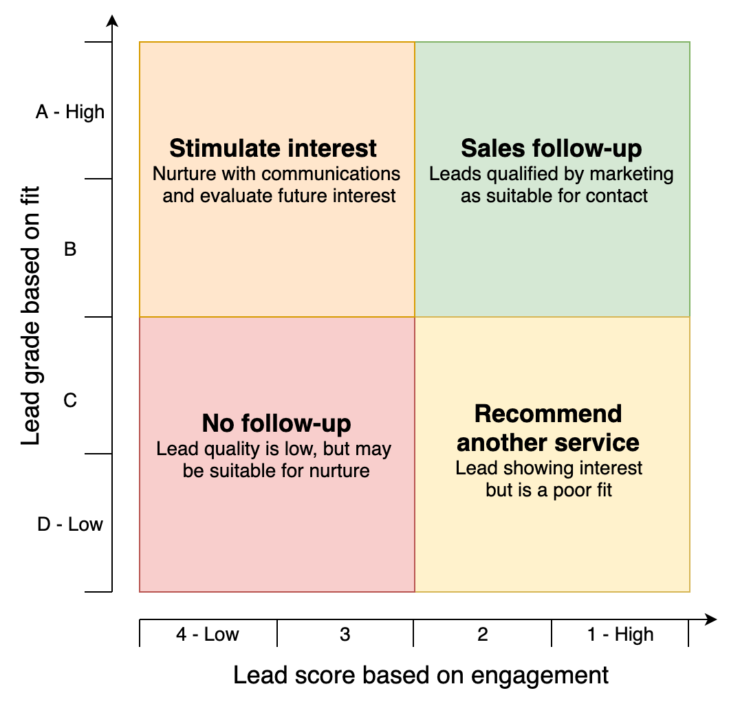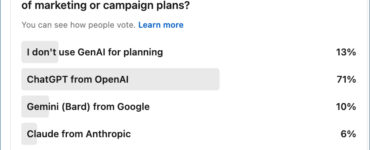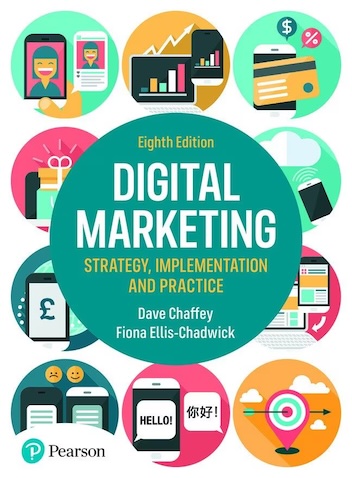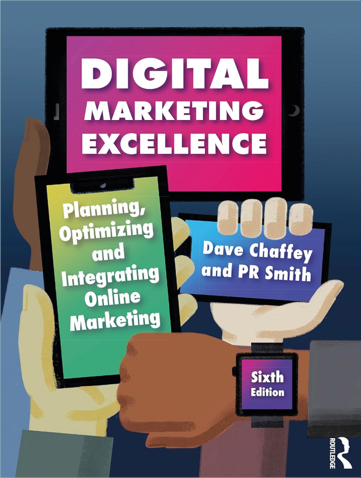Lead scoring and lead grading are data-driven marketing techniques often used for high-value B2B marketing services that assess a person’s profile and behaviour to determine whether they have potential to become a customer, i.e. are they a ‘hot lead’ or less likely to convert?
This is a powerful technique since some businesses may receive hundreds or even thousands of new database contacts each month as a result of inbound permission marketing techniques. Lead scoring and grading enables businesses to prioritise their time in contacting prospects by phone to ask about their interest in a service. It can also be used to target email, text messages or ads to people with different levels of interest and fit. Most marketing automation systems like Salesforce/Pardot and HubSpot use a scoring system like this to represent lead scoring and grading, although these features are not always used. Consultants experienced in lead scoring may be required to customise the marketing automation system for each business. Although this technique is typically deployed in B2B marketing it can be applied to consumer services that are high value and/or have an extended decision time. For example, a luxury travel agency could classify new enquirers in this way.
Definitions
Lead scoring
A technique to measure interest or engagement in business services based on a lead’s behaviour. Typically based on scoring based on interaction with different types of content, with points potentially taken away for inactivity. The higher the score, the more interested a lead is and therefore better suited for a sales conversation. Typically, leads are graded from 1 (Highest engagement or interest) to 4 (lowest engagement or interest)
Lead grading
A technique to measure fit with an organization’s services based on profile information such as job title, company size or sector. Typically leads are graded from A (Best fit) to D (poorest fit).
The chart below shows the relationship between lead scoring and grading defining four seg-ments of leads. Lead scoring and grading breaks these down further based on the codes shown on the axis. Highest scores top right are A1 and lowest scores, in the bottom left are E4 (some businesses may break this down with a different granularity, for example to A1 to C3 or A1 to E5). Note that the terminology of lead scoring and grading may over-lap; it’s commonplace to base lead scoring solely on fit (without behaviour), in this case it is confusingly still called lead scoring although, strictly it is lead grading.
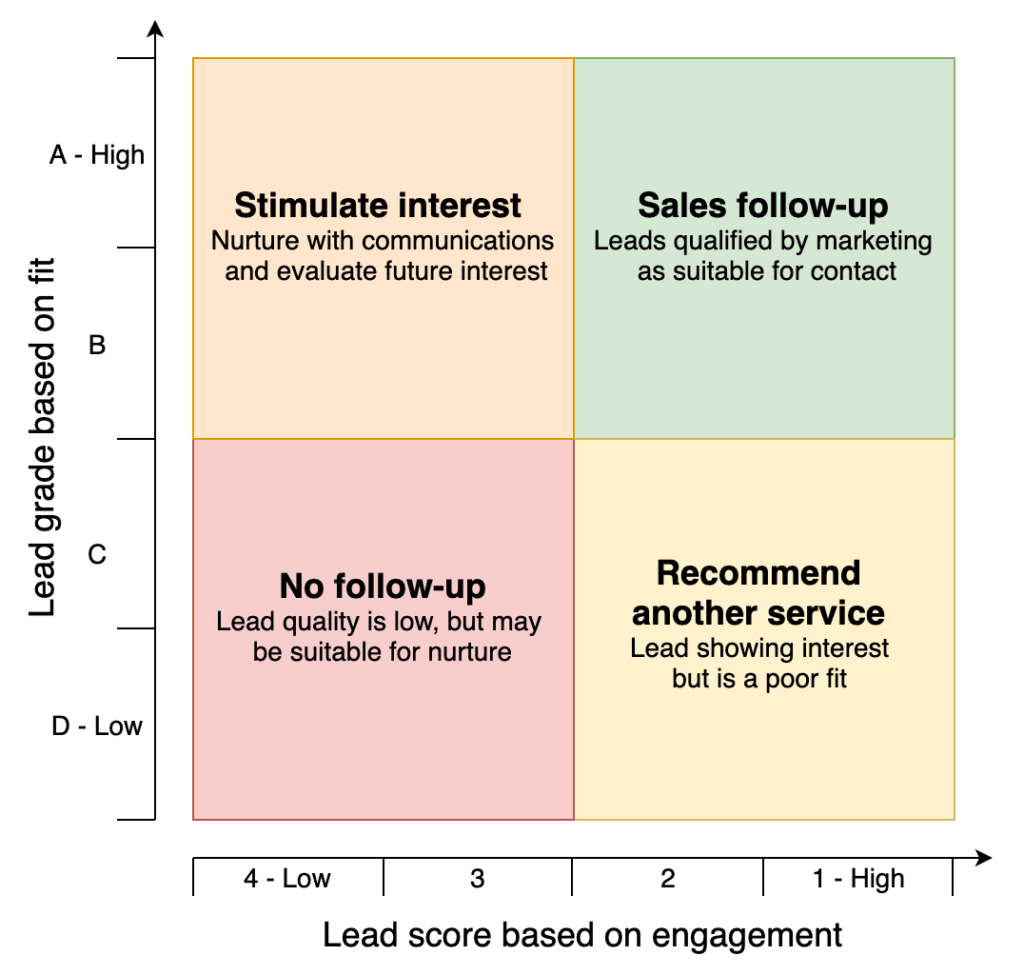
Another form of visualisation showing a lead scoring – lead grading matrix from Sale-up is shown below.
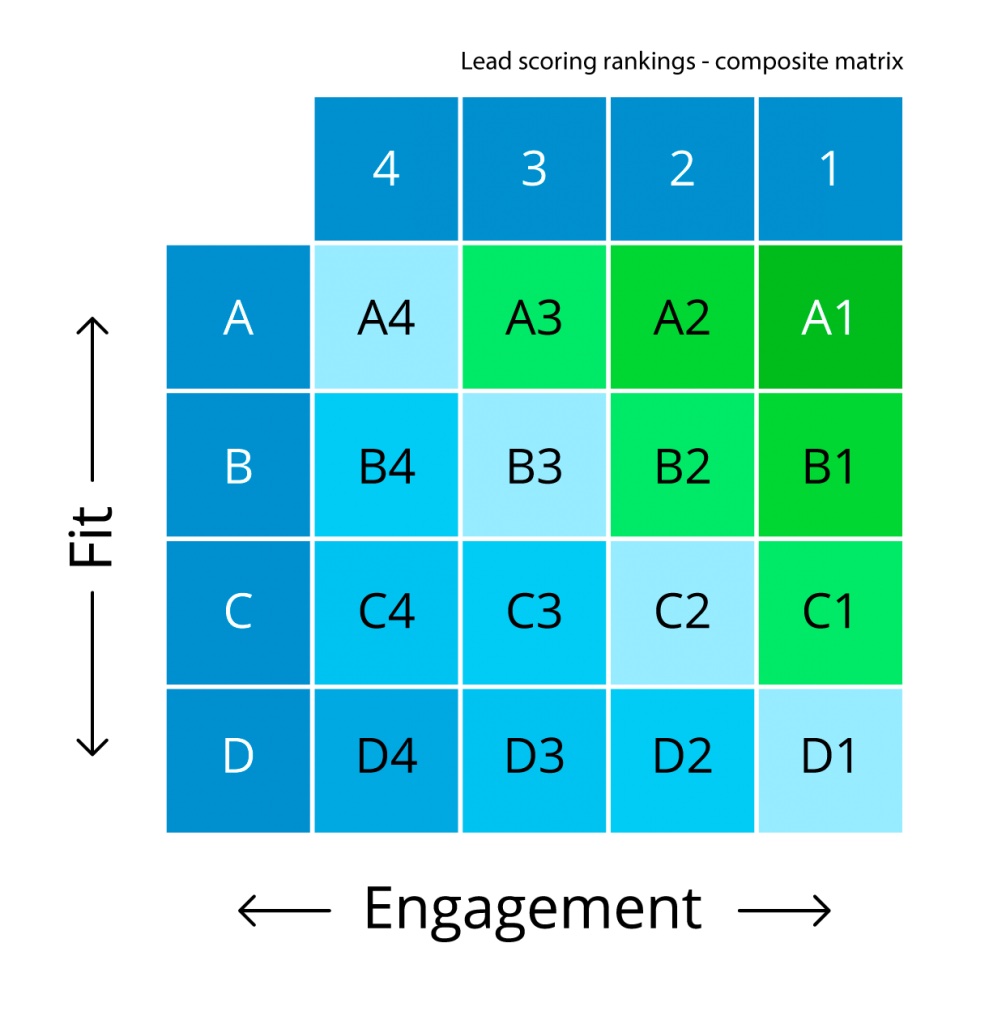
The highest quality leads categorized as Marketing Qualified Leads (MQLs) typically warrant follow-up by a phone call and if they are confirmed as a suitable fit, will be recorded as a Sales Qualified Leads (SQLs) in the CRM system. Note that the system is not precise since a lead may show a good fit, but may not have interacted much on the website since they received information elsewhere, such as at a tradeshow. For this reason, manual inspection of all leads may also be valuable. For expensive B2B services Account Based Marketing (ABM) techniques may be used to identify other people in the decision-making unit that are also involved in deciding on a purchase. This involves identifying multiple people from a company to target for which LinkedIn Sales navigator can be used and then contacting them through social selling or phone-based prospecting.
People with lower scores such as C3 to D4 are added to lead nurture segments where there is no proactive approach to contact leads since the purchase may not occur immediately.
